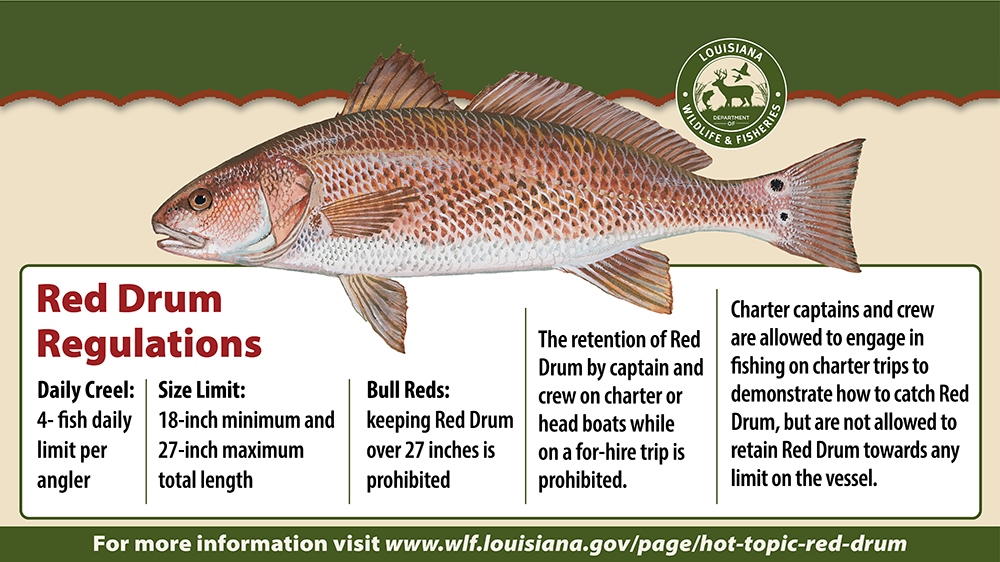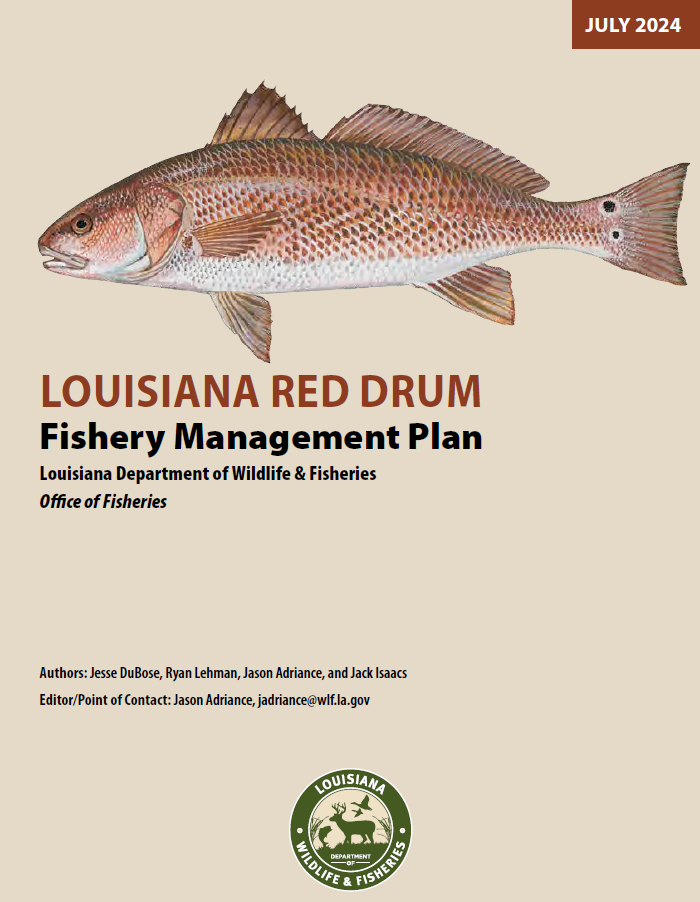Hot Topic: Red Drum

Stock Assessment Summary
Although the state’s latest Red Drum stock assessment shows that the red drum stock is currently above the SPR (spawning potential ratio) limit, the stock is decreasing at a rate that required a management change.
- Red Drum stock is not overfished (depleted), but overfishing (depletion) is occurring.
- Overfishing has occurred frequently in the most recent decade (80%).
- The spawning potential ratio (SPR; defined below) began trending downward in 2005.
- Recent recreational landings are at the lowest level observed since the 1980s.
- Red Drum has been a recreational-only fishery since 1988. No commercial harvest exists.
- The current recruitment estimate (defined below) is at the lowest level ever observed and has been declining since 1994
Red Drum Assessment Presentation to Commission
Red Drum Management
LDWF monitors two portions of the red drum stock, the juvenile stock (generally up to age 5 and generally under 27 inches in length) that resides in inshore waters and the adult spawning population (generally greater than age 5) in nearshore coastal waters. Red drum is unique in that the vast majority (97%) of harvest is on the juvenile stock when it is less than 27 inches in length or about 1.5 to 4 years old. Given this type of harvest strategy, the amount of red drum that moves through the fishery and into the offshore spawning population is critical to the future status of the stock.
Juveniles
The juvenile portion of the red drum stock is measured through an “escapement” rate. Escapement is the percentage of red drum that pass through the recreational fishery (there is no commercial fishery allowed for red drum in Louisiana) from inshore waters as juveniles and make it into the spawning stock offshore. The established escapement rate limit for management is 30%; Louisiana’s escapement rate is currently 20%, indicating too few red drum are surviving to make it offshore to spawn.
Spawning Stock
The spawning stock of red drum is measured with a spawning potential ratio (SPR), simply put, the number of red drum available to spawn relative to the population if they were not fished. While the current red drum SPR is above the limit of 20%, it has been declining since 2005 as fewer red drum “escape” to the offshore population. Since red drum are a long-lived species (39 years in Louisiana), recovery times will be long even if escapement rates rebound quickly as there is a lag between juvenile fish leaving the estuary between ages 4 and 5 and those fish living out their lifespan to 39 years old.
What is Being Done?
Escapement rates are expected to increase through recent management actions to stabilize the red drum population at or above target levels and prevent it from declining below the SPR limit. While escapement rates are expected to increase back to the management target relatively quickly with action (3 to 5 years), stabilization of the spawning stock to or above the management target could take until the year 2050 given the life span of red drum.

